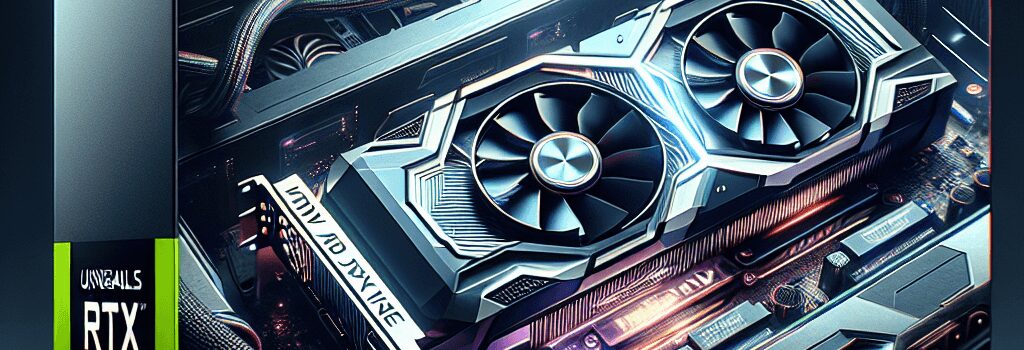Nvidia Unveils RTX 5060 Series: A New Era for Mainstream Gaming PCs

Nvidia has officially announced the latest addition to its GeForce RTX 50-series, reinforcing its commitment to powering mainstream gaming PCs with cutting-edge performance and innovative AI technologies. Today’s announcement introduces three new graphics cards, including the RTX 5060 Ti in both 8GB and 16GB variants and the standard RTX 5060 with 8GB, marking a significant evolution compared to the last-generation RTX 4060 series.
Product Lineup and Key Specifications
The new lineup is aimed squarely at gamers seeking high performance with moderate pricing, starting at an MSRP of $299. Nvidia’s RTX 5060 series addresses previous constraints by incorporating incremental improvements in core counts and memory bandwidth.
- RTX 5060: Launching in May with 8GB of GDDR7 memory, it retains the 128-bit memory interface, similar to the 4060, but its upgrade to GDDR7 ensures higher memory bandwidth and improved performance in memory-dependent tasks.
- RTX 5060 Ti: Available in 8GB and 16GB configurations, with MSRPs of $379 and $429 respectively, the 5060 Ti offers modest increases in CUDA core counts. It is engineered to deliver enhanced performance particularly for moderately complex gaming environments and 1440p resolutions.
Advances in Memory Technology and Power Efficiency
One of the most significant technical improvements in the RTX 5060 series is the transition from GDDR6 to GDDR7 memory. This change not only increases the memory bandwidth to up to 448GB/s on select configurations but also lays the groundwork for improved data handling and faster frame rendering under heavy loads. However, this upgrade is accompanied by a slight increase in total graphics power (TGP) consumption, with figures now ranging from 145W to 180W across the new models. This power bump is a natural trade-off for achieving higher throughput and enhanced responsiveness in gaming applications.
DLSS Multi-Frame Generation: A Quantum Leap for Gaming
Nvidia continues to bolster its image-upscaling technology with DLSS Multi-Frame Generation. With this next-generation AI-driven technique, the RTX 5060 series can interpolate up to three additional frames between the natively rendered ones. In comparison, the RTX 40-series were limited to generating a single frame, and previous generations did not support this feature at all. The enhanced multi-frame support means smoother animations and better performance when the base frame rates are already high. However, it does present challenges when it comes to making direct performance comparisons with older GPUs that lack this capability.
Improved Gaming Performance and Real-World Benchmarks
Early data from native benchmarks offers a promising glimpse into the performance gains with the RTX 5060 Ti. For example, in popular titles such as Hogwarts Legacy, the 5060 Ti achieved around 61 FPS at 1440p in native performance tests compared to the 3060 Ti’s 34 FPS. Although these figures are generated with AI-enhanced multi-frame generation active, they indicate that the new card is approaching nearly double the capabilities of its two-generation predecessor. Gamers, however, will be eagerly anticipating third-party evaluations that provide a clearer picture of performance without the influence of Frame Generation.
Market Availability and Supply Chain Challenges
One lingering question for buyers will be Nvidia’s ability to stock these new GPUs at the announced MSRPs. In recent cycles, both Nvidia and its competitors—including AMD’s Radeon RX 9070 series and Intel’s Arc B580/B570—have struggled with supply constraints. The RTX 5090 and RTX 5070, aimed at higher-end and mid-range markets, have experienced similar availability issues, suggesting that enthusiasts might encounter delays or higher-than-advertised prices. Industry experts note that while the RTX 5060 series is positioned as a mainstream product, logistical challenges could affect initial sales volumes.
Deep Dive: Technical Analysis and Expert Opinions
Prominent hardware analysts point out that the switch to GDDR7 memory is a pivotal upgrade. This transition not only improves raw data transfer rates but also has potential impacts on thermal management and energy consumption. Experts suggest that the increased CUDA core counts, although modest, are finely tuned to work with the new memory architecture to push performance boundaries at 1440p, a resolution steadily gaining popularity among gamers.
Furthermore, the integration of DLSS Multi-Frame Generation is receiving widespread acclaim in the technical community. As one veteran GPU reviewer noted, “The ability to interpolate three frames can redefine what we consider smooth gameplay, especially in titles where every millisecond counts.” However, they also caution that such technology is most effective when the base frame rate is already within an optimal range, highlighting the need for a balanced approach to system performance.
Future Outlook and Potential Innovations
While today’s announcements did not officially include the rumored low-end RTX 5050 GPU—the first entry-level model since the RTX 3050’s launch in January 2022—the possibility remains that Nvidia might continue to expand its portfolio. With ongoing advancements in both AI and rendering algorithms, many foresee future iterations building upon the RTX 50 series’ foundation to push adaptive scaling and power efficiency even further.
Both enthusiasts and enterprise users in sectors like cloud gaming and AI-assisted rendering stand to benefit from these breakthroughs. As Nvidia continues to innovate, we may well see entirely new product tiers designed to serve diverse applications from high-performance gaming to data-intensive professional tasks.
Conclusion
Nvidia’s latest RTX 5060 series represents more than just a generational upgrade—it is a strategic step forward in addressing the diverse needs of modern gamers and computational professionals alike. With enhanced memory bandwidth, refined AI technologies, and a commitment to pushing mainstream gaming performance, these graphics cards are poised to shape the future landscape of PC gaming. As with any major launch, the true test will come through rigorous third-party evaluations and real-world performance metrics, which the tech community eagerly awaits.
Source: Ars Technica